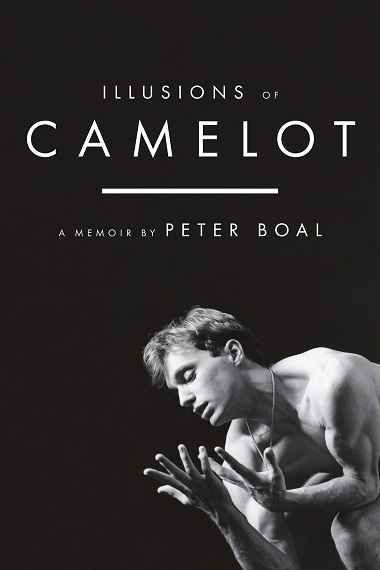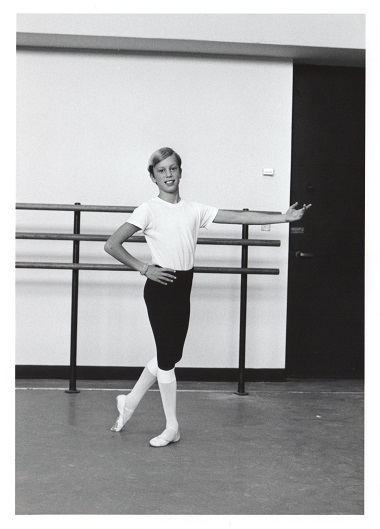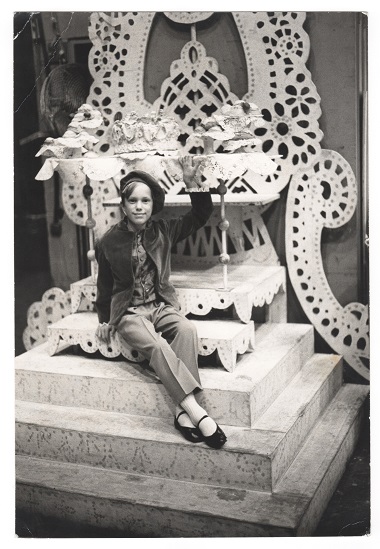
[As a Library Thing Early Reviewer I’m in the running to be sent books in exchange for a review. It’s a bit of a lottery – you choose books from scores offered each month, and maybe one shows up, or not. This one did.]
Though there are variations, the basic arabesque, said to be one of the most graceful of all ballet positions, requires the dancer to support one’s body weight on one leg, while the other is extended in back with the knee straight.
 On a warm afternoon in late May, 2015, my wife and I took our young granddaughters, budding dancers, to see a performance of the New York City Ballet. While waiting outside the theater in the cooling mists of the Lincoln Center fountain, we met two older women, one of whom said to the girls, “You look like dancers.”
On a warm afternoon in late May, 2015, my wife and I took our young granddaughters, budding dancers, to see a performance of the New York City Ballet. While waiting outside the theater in the cooling mists of the Lincoln Center fountain, we met two older women, one of whom said to the girls, “You look like dancers.”
We were off and conversing. Turned out both of the women had danced in the chorus of the New York City Ballet. I mentioned that we knew the mother of a dancer who had performed with the company, who now was the artistic director of the Pacific Northwest Ballet in Seattle.
“Peter Boal?”
“Yes, Peter Boal.”
“He wasn’t just a dancer. He was a principal! He was amazing! It was always said that he had the best arabesque of anyone.”
One Village Voice review of a Boal performance cited, “… the Apollonian elegance and good taste that inform his dancing, as well as with the verve and drama he brings to roles in Balanchine’s Prodigal Son and the “Rubies” section of Jewels.”
You’ll find no such boasting in Boal’s memoir, Illusions of Camelot (Beaufort Books, $24.95), and surprisingly, not a great deal about his career at all, which may come as a disappointment for those expecting more ballet, and less about Boal’s childhood in the wealthy enclave of Bedford, New York.
But there are key moments. Though Boal was indifferent to the few performances he attended in his earliest years, he was nine when, he writes, “During a performance of Coppelia, in the middle of the villagers’ romp, I suddenly realized I wanted to try ballet lessons. I tugged on my mom’s sleeve and whispered, “I want to try that.” ¶“Try what?” ¶”Ballet. Can I try ballet?”
He did, and progressed rapidly, appearing in a production of The Nutcracker later that year. By age 14 he was living on his own in New York City, studying at the School of American Ballet at Lincoln Center and performing regularly. In various portions of the book well-known names from the ballet world are dropped, albeit with restraint, and there’s an incisive chapter about a visit to George Balanchine in the hospital shortly before the ballet master’s death.
The grief over Balanchine is mirrored by other losses in the book; there’s also the death from AIDS of John Bass, a fellow dancer from the NYCB company, whom Boal was in a relationship with (though he has now been in a 30-plus-year marriage with Kelly Cass Boal, with three children).
And Boal keeps sounding the leitmotif of his family’s constant grappling with his father’s alcoholism, an ongoing struggle that was, in the end, doomed.
Lest this sound overly lugubrious, it should be noted that there’s a great deal of humor in the book, as it’s largely about Boal’s younger years, and the typical shenanigans and excesses of youth. If taking place in the privileged environs of Bedford and in its private school, horse-riding stable and country club, Boal is convincing enough that it was decidedly not Camelot.
So there are incidents of bullying (by twin girls), bad actors in grade school, teen parties where the drinking gets out of hand, disastrous family meals, unruly dogs and truculent neighbors, related in prose rich in detail and dialogue (though Boal cheerfully admits that, “… some dialogue has been recreated using the author’s best recollections”).
As mentioned, his mother, Lyndall, a scion of England’s Cadbury chocolate company, is a friend, and I’m happy to say she comes off as stalwart. As do housekeeper Vivian Wilson and nanny Mrs. Hattie (Lindsay), clearly women indelible in Boal’s upbringing and warmly captured here.
“These memories were pieced together like a mosaic,” writes the author. The short chapters certainly stand on their own and add up to a comprehensive whole, though there are disjunctions of chronology that will keep readers on their toes. But in a book by a ballet master, that seems apt enough.
[August 22, 2023]


